Fang Fiction: How Twilight Brought Fan Culture Out of the Shadows
Did a teenage vampire romance forever change how we consume popular culture?
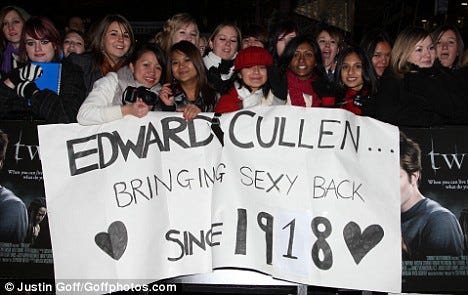
On November 21, 2008, something unprecedented happened outside multiplexes across America. Teenagers—primarily young women—arrived hours before midnight screenings, many wrapped in blankets emblazoned with the faces of pale, supernaturally attractive young men. Some wore homemade T-shirts declaring themselves members of "Team Edward" or "Team Jacob." Others clutched dog-eared paperbacks with black covers featuring hands cradling red apples, chess pieces, or ribbons. The shared object of their devotion: "Twilight," Catherine Hardwicke's adaptation of Stephenie Meyer's vampire romance novel.
The film would gross $35.7 million on its opening day, the biggest opening day for a female director at that time. By the franchise's conclusion in 2012, the five films had earned over $3.3 billion worldwide. But Twilight's significance transcends box office statistics. The phenomenon marked a pivotal moment when fan culture—previously relegated to convention halls and niche internet forums—burst into mainstream visibility, forever changing how audiences engage with media and how the entertainment industry views its most passionate consumers.
Crawling Out of the Coffin: Fan Culture Before Twilight
To understand Twilight's cultural impact, we must first recognize the status of fan communities before Edward Cullen's sparkling skin caught the sun's light. Fan culture had existed for decades, from Star Trek's letter-writing campaigns in the 1960s to the vibrant fanfiction communities of the 1990s. But these passionate audience subcultures operated primarily on society's margins—both culturally and commercially.
Pre-Twilight fan activities faced two significant limitations. First, they were logistically constrained. Fan communities gathered at specialized conventions, communicated through print fanzines, or in the early internet era, through primitive message boards and mailing lists. Second, and perhaps more significantly, they were culturally stigmatized. The stereotypical "fan" was portrayed as a socially awkward obsessive, usually male, whose excessive devotion to fictional worlds marked them as somehow deficient in real-world social connections.
Star Trek fans (Trekkies) became the archetypal example, so thoroughly mocked that even William Shatner famously told them to "get a life" in a 1986 Saturday Night Live sketch. Despite gradual expansion through properties like "The X-Files," "Buffy the Vampire Slayer," and "Harry Potter," fan communities remained relatively insular, with membership requiring specialized knowledge of both the source material and the community's unique social codes.
The industry's relationship with these fans was similarly complicated. Studios recognized fans' purchasing power but viewed them primarily as a reliable but limited market for merchandise. Fan creativity—from fiction to art to videos—was tolerated at best, threatened with legal action at worst, and rarely incorporated into official marketing strategies.
This was the landscape into which Stephenie Meyer's tale of vampire romance emerged—a landscape Twilight would transform as thoroughly as its protagonist, Bella Swan.
Literary Nocturne: From Mormon Housewife to Publishing Phenomenon

The Twilight origin story has become almost as mythologized as the saga itself. In June 2003, Stephenie Meyer, a Mormon housewife with no professional writing experience, dreamed of a vampire boy and human girl discussing their impossible love in a meadow. She began writing the next morning. Fifteen months later, after sending query letters to fifteen literary agencies (fourteen rejected or didn't respond), she secured representation and quickly landed a three-book deal with Little, Brown and Company.
Published in October 2005, "Twilight" found modest initial success, but something unusual happened: teenage readers, primarily girls, began passing the book from hand to hand with evangelical fervor. By July 2007, when the third installment "Eclipse" was released, the series had become a genuine phenomenon, with midnight release parties drawing thousands of fans.
What made Twilight different from previous young adult sensations was the particular intensity and expressiveness of its fandom. Readers weren't just consuming the story—they were inhabiting it, debating it, and building identities around their engagement with it. The central love triangle between human Bella Swan, vampire Edward Cullen, and werewolf Jacob Black inspired perhaps the first mainstream "shipping war" (disputes over preferred romantic pairings), with fans proudly declaring allegiance through Team Edward/Team Jacob merchandise.
This passionate engagement created a feedback loop between fans and publishers. Little, Brown wasn't just selling books but facilitating an experience. Midnight release parties, once exclusively the domain of Harry Potter, became standard. Merchandise proliferated beyond typical bookmarks and posters to include jewelry, clothing, and home goods. Most significantly, the publisher embraced fan discourse as a marketing tool, encouraging the team divisions and romantic debates rather than attempting to control the narrative.
Digital Dusk: Social Media Meets Supernatural Romance
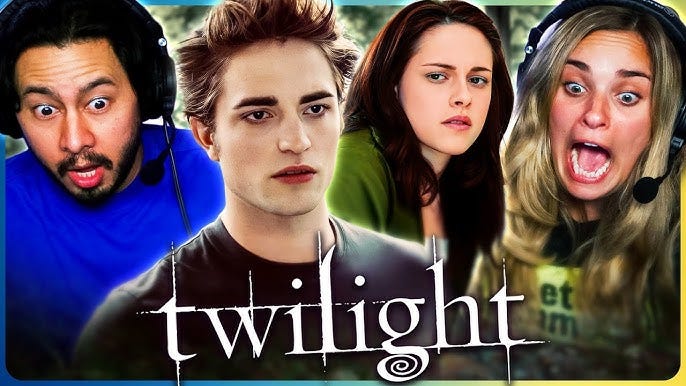
Twilight's ascension coincided perfectly with transformative developments in social media. When "Twilight" was published in 2005, MySpace was the dominant platform. By the time the first film adaptation arrived in 2008, Facebook had 100 million users, and Twitter was gaining traction. The film franchise's conclusion in 2012 occurred just as Tumblr and Instagram were becoming cultural forces.
This timing proved crucial. Unlike previous fan phenomena that relied on specialized forums or message boards requiring intentional discovery, Twilight fandom flourished on general-purpose platforms where its visibility extended beyond the already-converted. Teenage girls could express their Twilight devotion not through obscure channels but on the same platforms where they conducted their broader social lives.
The franchise became one of the first to fully leverage social media for marketing, with studio Summit Entertainment creating official accounts that shared exclusive content and engaged directly with fans. More significantly, they recognized the value of fan-created content as free marketing, encouraging rather than suppressing the memes, videos, and images that fans circulated. When Edward Cullen's skin "sparkled like diamonds" in sunlight became an object of both adoration and mockery, the studio didn't fight the discourse but incorporated it into promotional materials.
This approach represented a radical departure from how entertainment companies had previously managed intellectual property. Rather than tightly controlling the narrative, Twilight's producers recognized that fan discourse—even when critical or parodic—ultimately served the franchise's commercial interests by maintaining its cultural centrality.
Midnight Sun: The Mainstreaming of Fan Practices
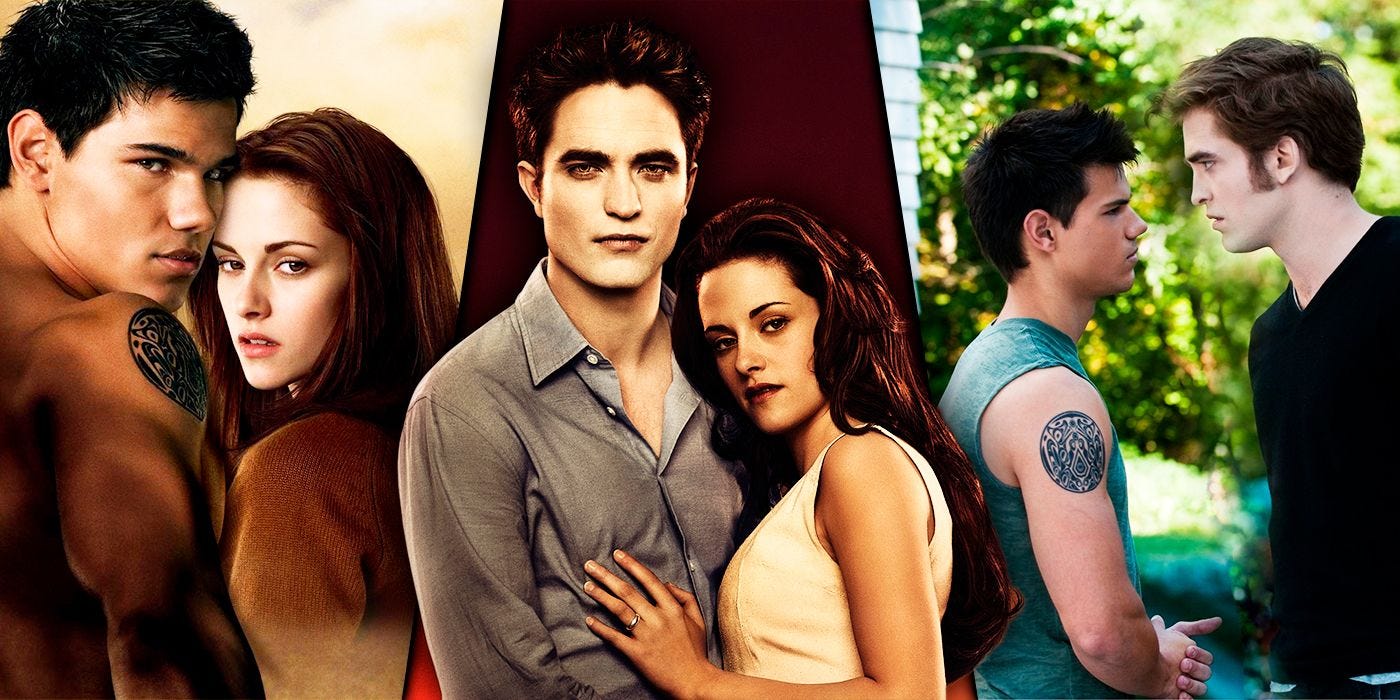
Perhaps Twilight's most significant legacy was how it brought previously niche fan behaviors into mainstream visibility. Practices that had been developed in specialized communities like science fiction and anime fandoms suddenly appeared in shopping malls and suburban high schools across America.
Consider these previously subcultural behaviors that Twilight helped normalize:
Shipping: The practice of investing in particular romantic pairings became mainstream conversation through the Edward/Jacob debate. Suddenly, having strong opinions about fictional characters' romantic lives wasn't just for fanfiction writers but for anyone with Team Edward merchandise.
Fanfiction: While Twilight didn't invent fanfiction, it dramatically expanded awareness of the practice. The series inspired over 220,000 stories on FanFiction.net alone. When one such story, "Master of the Universe," was later revised into "Fifty Shades of Grey" and became a commercial sensation, fanfiction entered mainstream consciousness as never before.
Cosplay: The practice of dressing as characters, once primarily associated with anime conventions, became normalized through Twilight premieres where thousands of fans arrived in character-inspired outfits.
Fan Tourism: Forks, Washington—the real town where the fictional story is set—transformed into a pilgrimage site, with local businesses creating Twilight-themed attractions despite no filming occurring there. This phenomenon of fans visiting real-world locations associated with fictional stories has since become common practice for franchises from "Breaking Bad" to "Game of Thrones."
Transformative Fan Engagement: Twilight fans didn't just consume the story but transformed it through videos, artworks, and critical analysis. This mode of engagement has become standard for successful franchises, with studios now designing properties specifically to encourage such participation.
The mainstream visibility of these practices created a template for how subsequent franchises would engage with fans, from "The Hunger Games" to the Marvel Cinematic Universe. By 2012, no major entertainment company could ignore the commercial potential of actively nurturing rather than merely tolerating fan communities.
Critical Daylight: The Gendered Double Standard

Despite—or perhaps because of—its commercial success and cultural impact, Twilight faced extraordinary critical derision. While the works certainly had legitimate flaws, the intensity of the backlash often revealed more about cultural biases than about the material itself.
The criticism typically focused on the franchise's feminine-coded elements: the prioritization of romance over action, the emphasis on emotional states over worldbuilding logic, and the centering of a female perspective. This gendered response exposed a persistent double standard in how popular culture treats predominantly male versus predominantly female fandoms.
When young men lined up for Star Wars or Batman films, they were described as "enthusiasts" or "dedicated fans." When young women showed the same dedication to Twilight, they were "hysterical" or "obsessive." Male-dominated fandoms were portrayed as communities of discernment; female-dominated fandoms as masses of undiscriminating consumers.
This dismissive attitude extended to the fans themselves, who were routinely portrayed in media as mindless screaming teenagers rather than engaged participants in a complex cultural phenomenon. The "Twilight Mom" became a particularly ridiculed figure—a grown woman supposedly too old for such interests, despite male fans of similarly commercial properties facing no such age-related criticism.
What these critics missed was how Twilight fans were often highly self-aware, capable of simultaneously loving the material while critiquing its problematic elements. They created communities that used the text as a starting point for exploring identity, sexuality, and relationships—often with more nuance than the source material itself provided.
Breaking Dawn: Legacy and Legitimacy
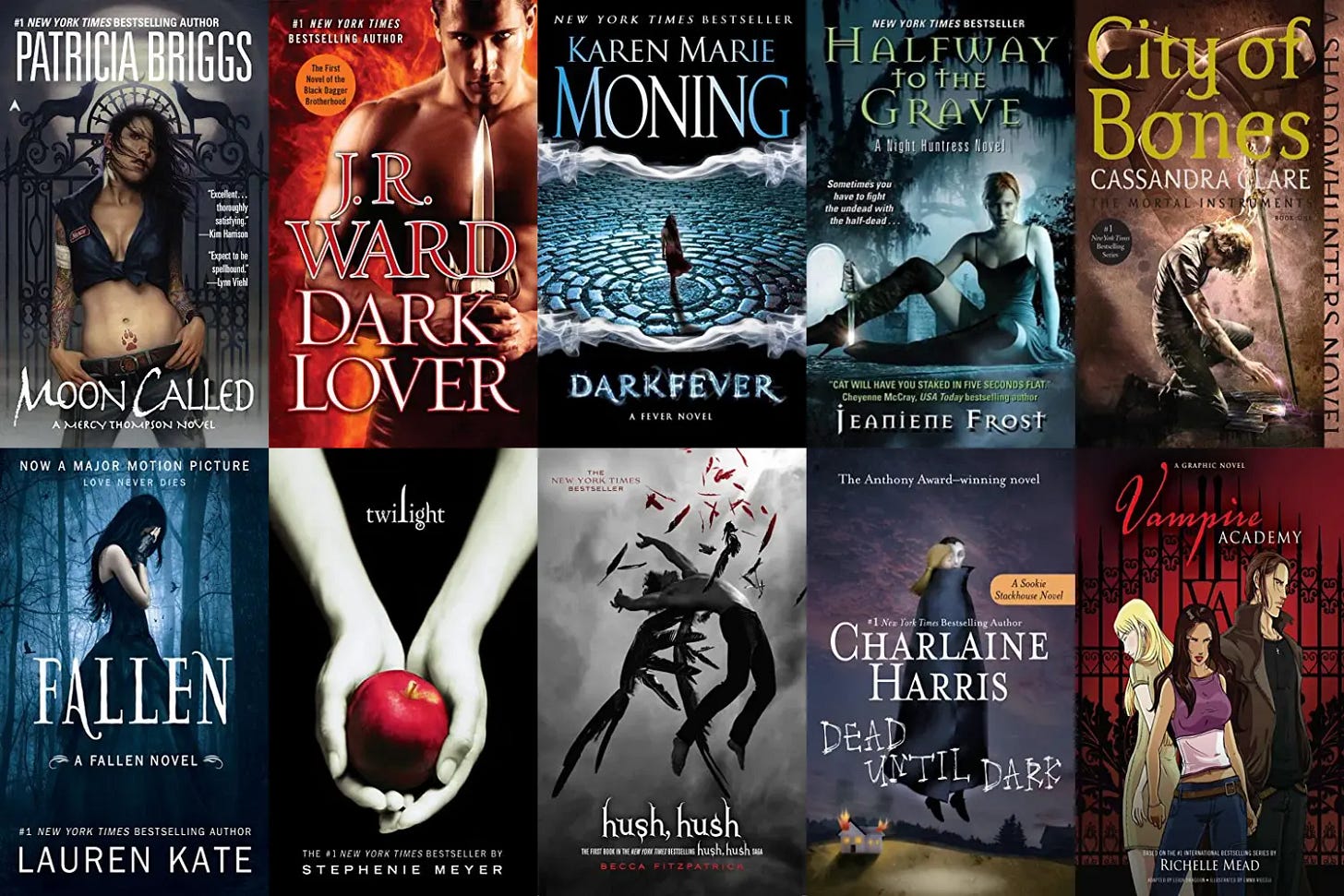
Looking back from our current media landscape, Twilight's influence appears both profound and surprisingly unacknowledged. The franchise demonstrated the commercial viability of female-centric narratives at a scale that helped enable subsequent phenomena from "The Hunger Games" to "Divergent." Its success with a female director (Catherine Hardwicke) and female author created precedent, however imperfectly followed, for women creators leading blockbuster properties.
More significantly, Twilight transformed how entertainment companies approach fandom. The current strategy of deliberately creating "fan-servicey" moments, encouraging shipping debates, and designing narratives with social media conversation in mind can be traced directly to lessons learned from the Twilight phenomenon. From Disney's carefully orchestrated Marvel rollouts to Netflix's strategic engagement with fan theories, contemporary entertainment marketing reflects Twilight's discovery that fans aren't just consumers but ambassadors and co-creators.
The influence extends to publishing as well. The explosive growth of the Young Adult category, the increased prominence of paranormal romance, and the now-standard practice of adult engagement with YA fiction all received crucial boosts from Twilight's success. When bookstores created dedicated "Paranormal Romance" sections featuring black covers with isolated symbolic objects, they were acknowledging a market that Twilight had proven existed at scale.
Perhaps most importantly, Twilight helped legitimize the emotional engagement of female audiences with popular culture. While female fans still face disproportionate criticism, the commercial power they demonstrated with this franchise made dismissing them as a market force untenable. Every entertainment company now recognizes that women's passionate engagement with media properties translates to billions in revenue when properly respected and nurtured.
Eternal Twilight: Fan Culture Now
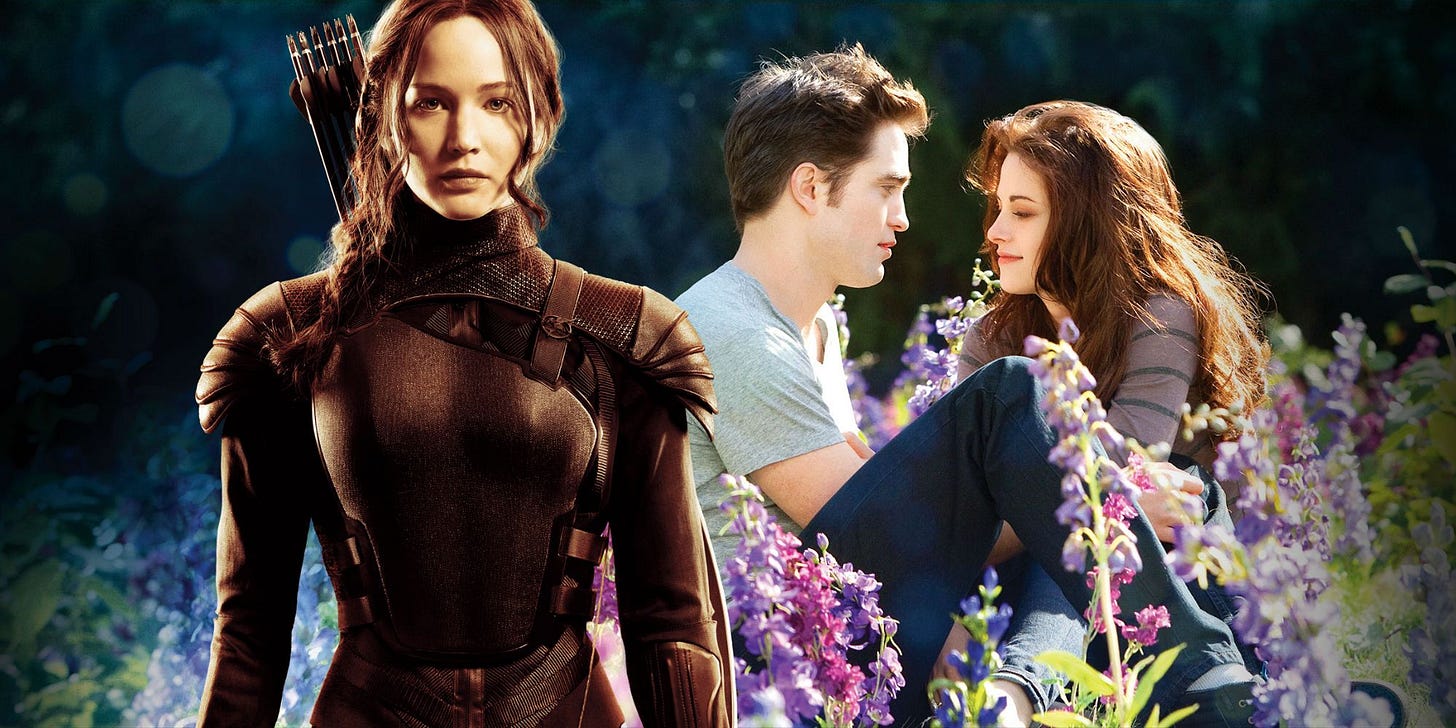
When the final Twilight film premiered in 2012, the landscape of fan culture had transformed irrevocably. Practices once considered niche had entered the mainstream. The derisive stereotype of the obsessive fan had been complicated by the economic power those fans wielded. Entertainment companies had shifted from policing fan expression to actively encouraging it.
The subsequent decade has seen these trends accelerate. Fan conventions have grown from niche gatherings to major commercial events. Fanfiction has gained increasing legitimacy, with some publishers actively recruiting successful fan authors. The Marvel Cinematic Universe has built a multi-billion-dollar empire partly by applying Twilight's lessons about nurturing fan communities and encouraging character-based identification.
Social media platforms now design features specifically to facilitate fan engagement, from Twitter's expanded character count enabling more detailed discussions to Instagram's Stories feature perfect for sharing fan theories and reactions. TikTok has become perhaps the ultimate fan expression platform, with its emphasis on transformative remixing of existing content mirroring how fans have always engaged with their favorite properties.
For all the mockery it endured, Twilight was vindicated by history. The practices it mainstreamed now form the backbone of how successful entertainment properties engage with audiences. The passionate fan behaviors once derided as teenage girl hysteria are now recognized as valuable forms of engagement worth billions in marketing value.
Catherine Hardwicke herself has reflected on the films’ legacy, saying:
“Twilight changed the perception, the idea that a movie about a girl wouldn't be popular, wouldn't make a lot of money. It changed that, it blew it out of the water. A novel written by a woman, a movie directed by a female. We broke records. That's a ground-breaking thing. People can use that for ammo; when another female director goes to a meeting, they're gonna say, "well, I don't think you can do this," they can respond with, "Well, Catherine did it, Twilight did it." You use it as a building block to the next thing and the next thing.”
The sun eventually set on the Twilight phenomenon itself, but the changes it brought to fan culture continue to shape our media landscape—no longer relegated to the shadows but proudly sparkling in the mainstream light.
What fan community were you part of that felt underground before going mainstream? How did that transition change your relationship with the source material? Share your experiences in the comments.




